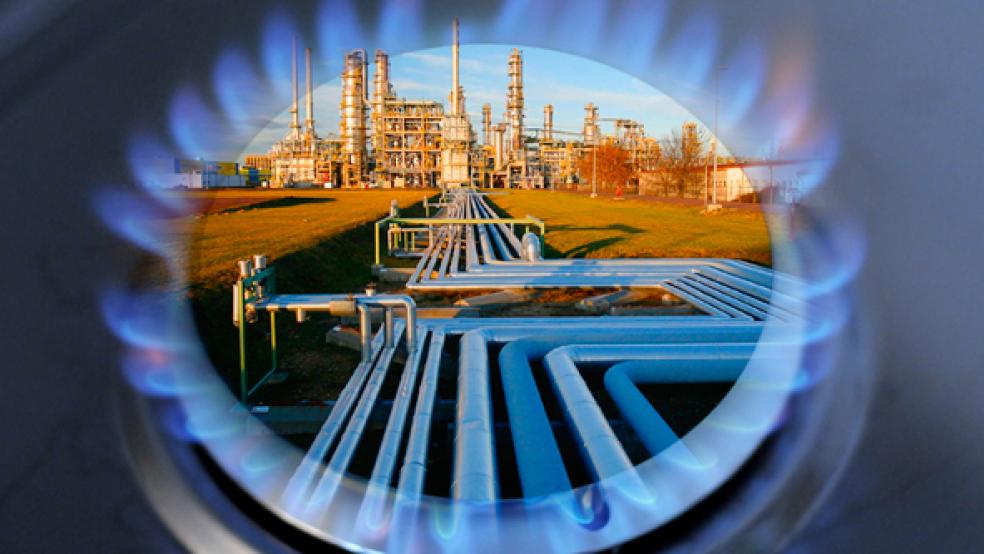Pessimistic new reports warn that falling oil prices will bring an end to the U.S. energy renaissance. Oil companies’ stocks are suffering, and some industry analysts are predicting that new drilling investment will dry up, leading to the bursting of what they see as the fracking bubble.
Falling oil prices, while beneficial for the overall economy, do have the potential to dampen the unforeseen growth in U.S. oil production, which has surged fifty percent since 2008. However, claims that the boom has ended fail to recognize the disruptive, cost-saving effects of technological advancements.
Related: More Than $150B in Oil Projects Face the Axe in 2015
Take, for example, Energy Recovery Inc.’s (ERII) promising new pumping technology. Its new pump, the VorTeq, may offer drillers some much-needed cost savings.
The capital and maintenance costs of pumps are a major cost to drillers. Powerful pumps are necessary for the fracking process. These pumps also have to be durable, as water mixed with chemicals and sand or ceramic proppant is shot down wells at high pressures to release trapped oil or gas.
Many fracking sites have around a dozen pumps, each costing hundreds of thousands of dollars. Because the pumps constantly break down or need daily maintenance, drillers need to have extra pumps on hand, which further increases capital costs.
With the VorTeq, the other pumps on the site only work with clean water that is constantly cycled through the system. The fracking fluid’s rough mixture never touches the other pumps. Since the VorTeq’s core is made of tungsten carbide, which is 1,000 times more resistant to abrasion than steel, it is far more durable than existing pumps.
Related: Why Russia Is Over a Barrel on Oil Prices
The VorTeq works by transferring the high pressure energy from the clean water to the fracking fluid, at the fracking site’s “missile.” Energy Recovery Inc. has already proven this technology in desalination plants, where its pressurized energy transfer system commands a 90 percent market share.
Energy Recovery Inc. CEO Tom Rooney told me in a telephone conversation that a typical fracking crew can save $1 million a year in pump maintenance costs by using the VorTeq. The costs of starting up a drilling site are also lower, since fewer pumps and extra equipment are necessary. The capital cost savings add up to an additional $3 million, even when including the cost of leasing the VorTeq. Rooney cited estimates that a VorTeq pump can increase a fracking site’s productivity by 20 percent.
The pump can be easily integrated into existing fracking sites and it is able to accommodate a variety of site configurations. This means that once Energy Recovery Inc. is able to increase production, the new technology could quickly lower the costs of fracking and help to offset the effects of falling oil prices. Energy Recovery Inc. has agreed to six months of field trials with Liberty Oilfield Services. Rooney said to expect a full commercial rollout in the second half of next year.
Advancements in technology led to the fracking boom. Geologists knew where the oil and gas was, but the reserves were considered unrecoverable. The adoption of smart drilling technology allowed the development of fracking sites, and then drastically increased efficiency, further cutting costs. Similarly, other innovations allowed for off-shore drilling to become technologically possible and economically feasible.
Related: The North Dakota Oil Boom Now Pays for College
No energy czar could have foreseen the fracking boom that has fueled America’s energy renaissance and supported the country’s economic growth. In the same way, no one bureaucrat or agency will plot the rise of the next game-changing technology. Markets are unpredictable, but when people are left free to develop solutions to problems, unforeseen innovations are usually the result.
As Boston College economics professor and Shadow Open Market Committee member Peter Ireland argued last week about falling oil prices, “What we see, instead [of the effects of resource scarcity], are the much more powerful effects of technological and scientific innovations, which allow us to earn, produce, and consume more and more, even as we rely on scarce natural resources less and less, and keep prices for those commodities low and stable. Truth be told, there is no end to human ingenuity, nor are there limits to the wealth of nations governed by free, fair, and efficiently functioning markets.”
The creativity of individuals cannot be overstated. At the same time that some are predicting that the plunge in oil prices will spell the end of the U.S. energy renaissance, cost-saving, innovative technologies such as the VorTeq are being developed and brought to market. This bodes well for continued growth in U.S. energy production, even in the face of falling oil prices.
Jared Meyer is a policy analyst at Economics21 at the Manhattan Institute for Policy Research, where this article originally appeared.
Read more at E21:
Do Immigrants Boost Economic Growth? Yes
America Should Avoid Germany’s Failed Energy Policy
The Universal Message of Falling Oil Prices






